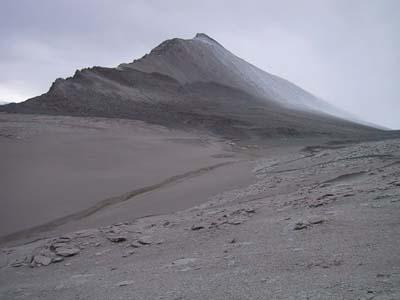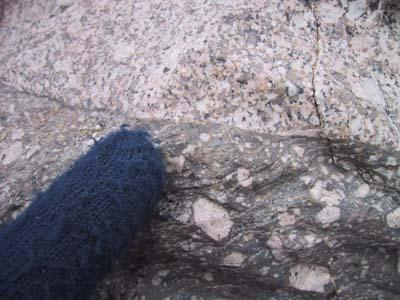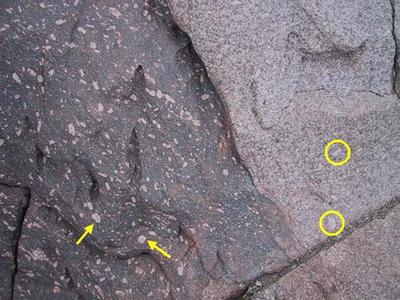
|
20 January, 2003Bad Weather Day We have been fortunate with the nice weather but sooner or later it was bound to happen and we would have some poor weather. All last night the wind howled at over 20 miles per hour. When we woke up cold weather and thick clouds greeted us. Some snow had actually fallen on the mountaintops but because the air is so dry it will soon sublimate (go from a solid to a gas without melting first). Back in McMurdo the weather was worse so the helo flights have been cancelled. This will be the third day in a row we have been without helo support and we've requested more stove fuel and water when the helos are operating again. We aren't in any danger due to supplies but to be on the safe side we've begun to melt some snow that has been near the camp since we arrived which we'll use to supplement the water we have left. After dinner, we go on a hike in the local area to check out some of the relationships between some dolerite dikes and the granite. In the field it is difficult to know what the dark rock is. It could be dolerite that has been chemically altered when it melted the granite it intruded into. The lighter colored crystals are feldspar which has a higher melting point than the surrounding minerals and was not melted by the intruding molten rock. Consequently, the other minerals have melted out with the feldspar remaining. You can see feldspar crystals in the granite if you look very closely. Antarctic Tidbits: The Antarctic ice cap has 29 million cubic kilometers of ice. This is 90% of all the ice on the planet and between 60 and 70% of all of the world's fresh water. Only about 0.4 percent of Antarctica is not covered by ice. Antarctica has a peculiar group of fish called the ice fish. These have no red pigment - hemoglobin - in their blood to carry oxygen around. Because the temperature is so low and oxygen dissolves better in cold temperatures, they get by perfectly well without it. They just have a larger volume of clear blood instead and so unusually have a ghostly white color, parcticularly their gills. These ice fish have recently been shown to have their DNA damaged by high levels of ultra violet light resulting from the ozone hole (they have less pigment to prevent the UV getting through). Many other Antarctic sea creatures including fish have antifreeze in their blood so they don't accidentally get frozen solid! The largest land animal in Antarctica is an insect, a wingless midge, Belgica Antarctica, less than 1.3cm (0.5in) long. There are no flying insects (they'd get blown away), just shiny black springtails that hop like fleas and tend to live among penguin colonies. Source: http://www.coolantarctica.com/Antarctica%20fact%20file/fascinating_facts_about_antar.htm
Contact the TEA in the field at . If you cannot connect through your browser, copy the TEA's e-mail address in the "To:" line of your favorite e-mail package. |








